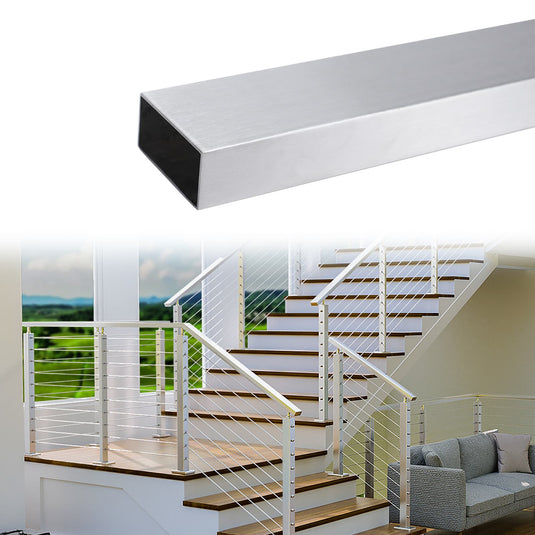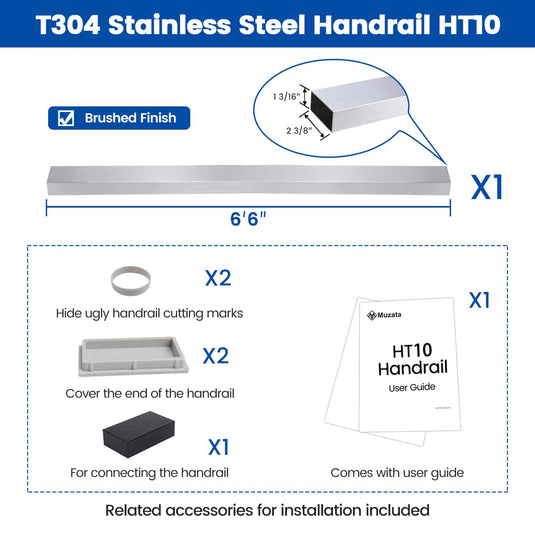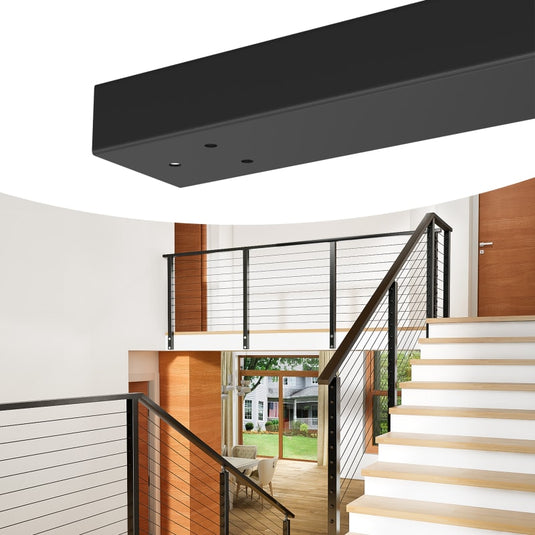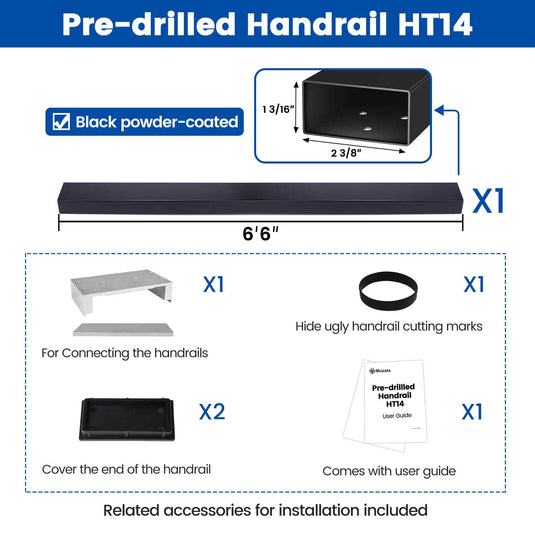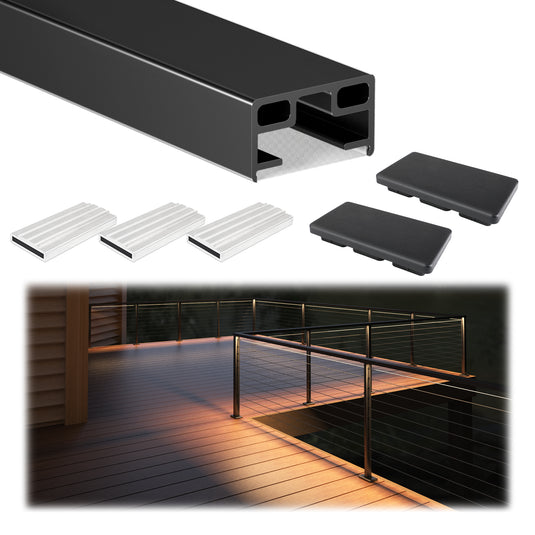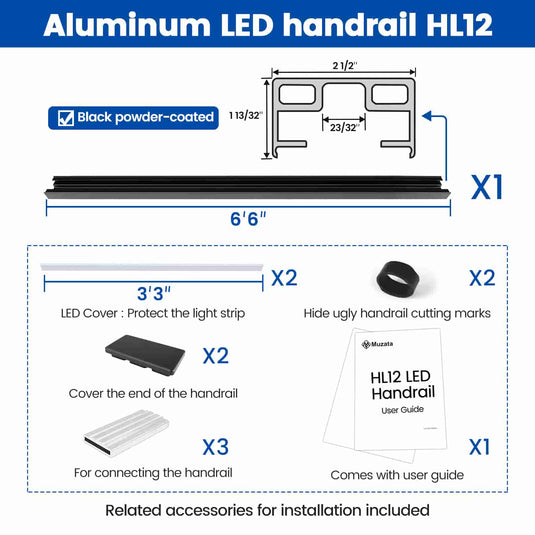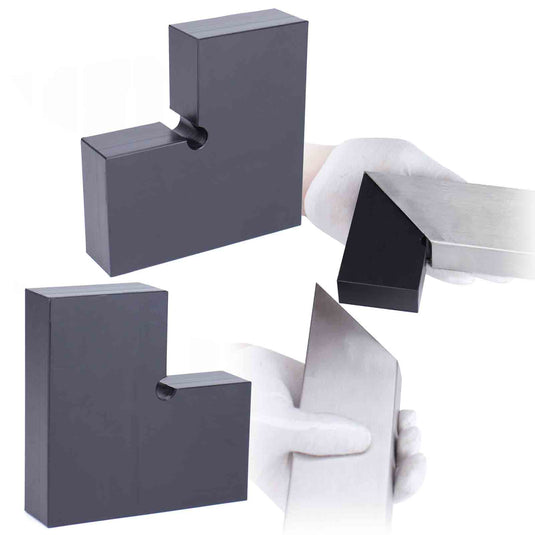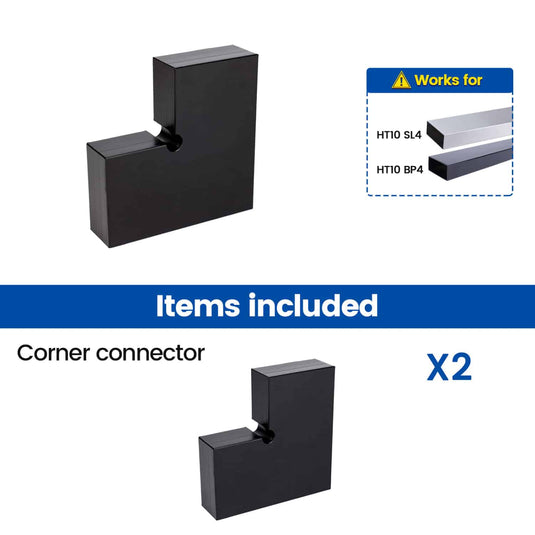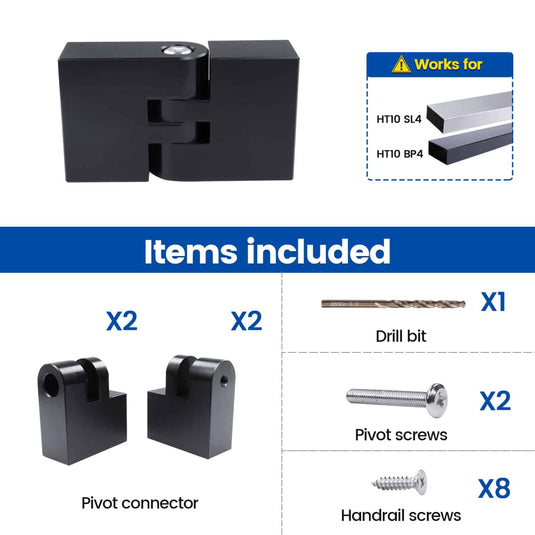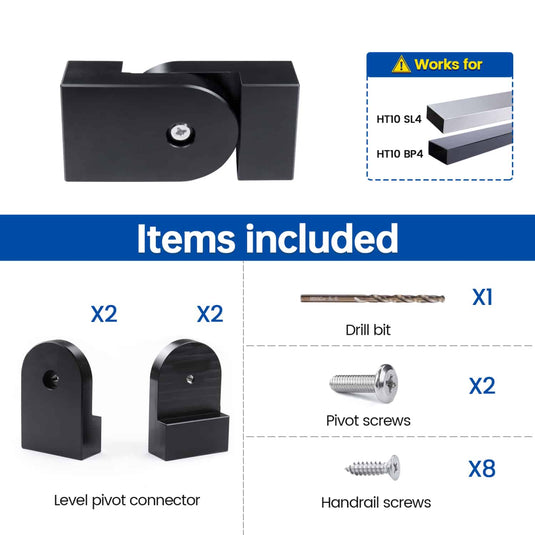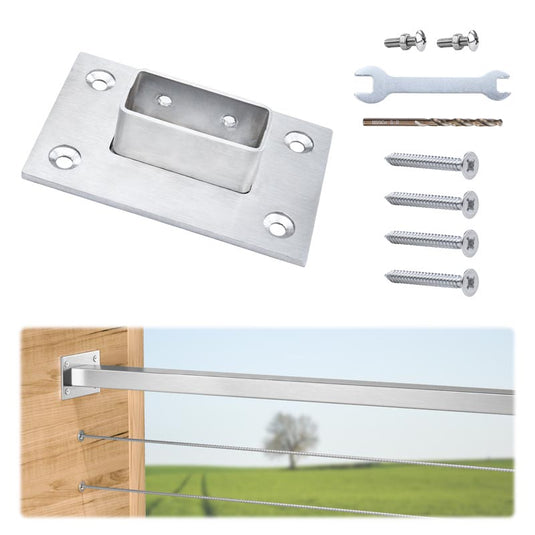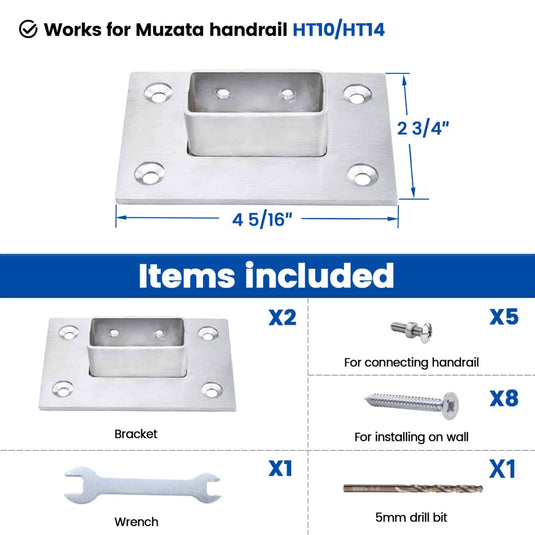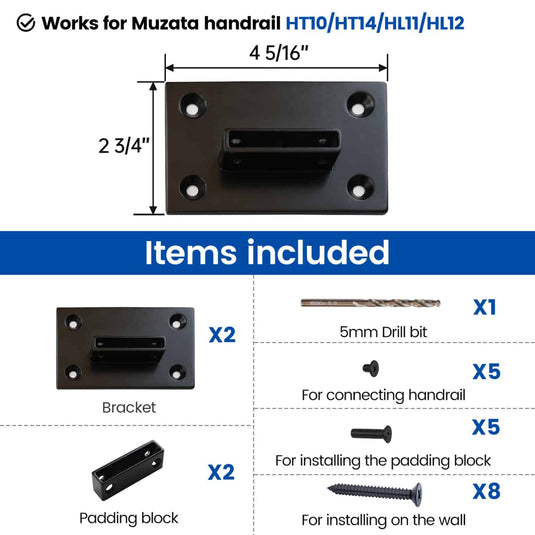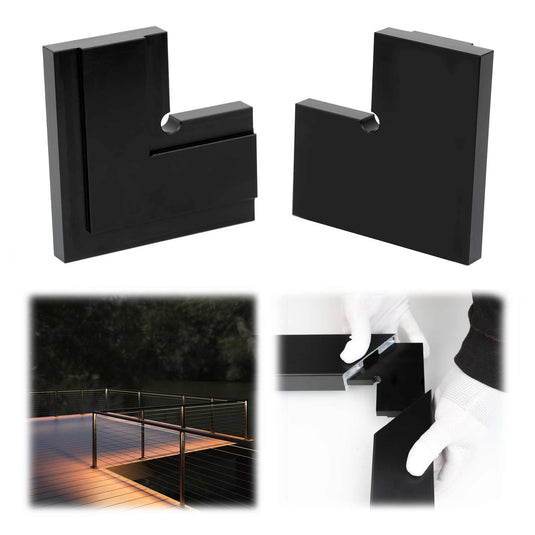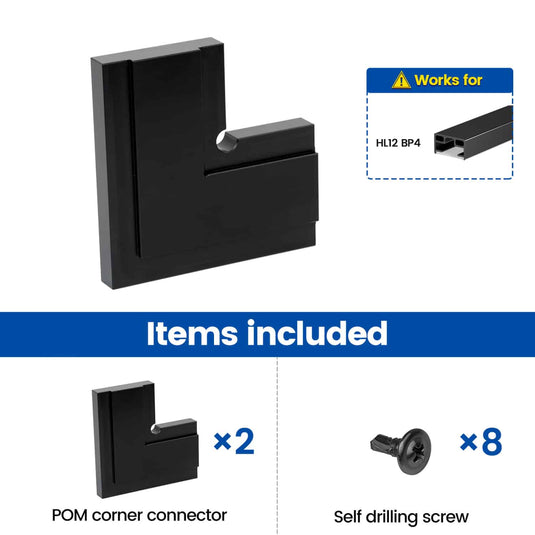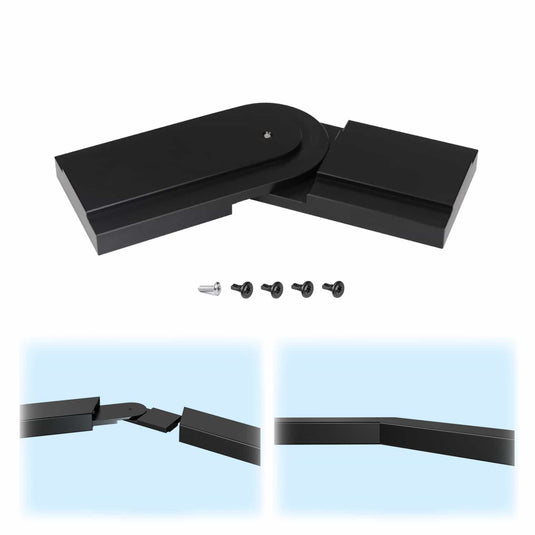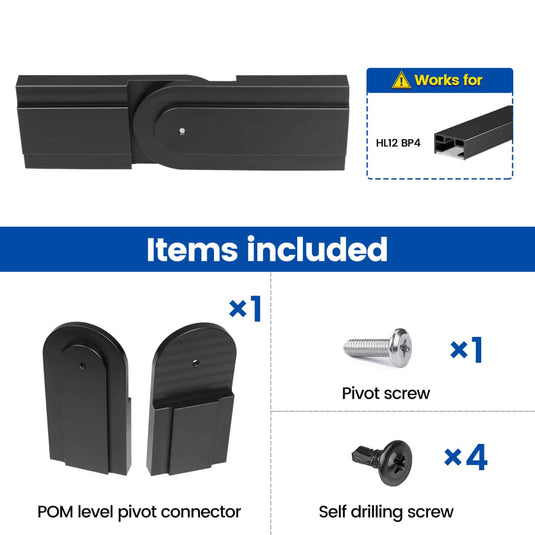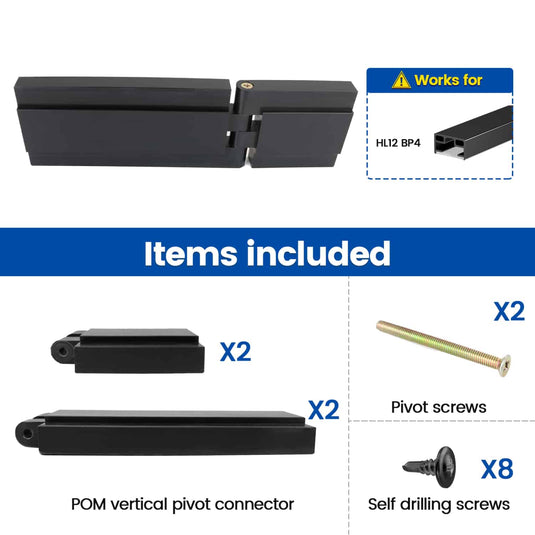Handrails
14 products1 Year Warranty
Fast, Free Shipping
Free 3D Design
Handrails to Elevate Your Home's Style
In architectural design, handrails are not only a cornerstone of safety but also an aesthetic focal point that elevates spatial aesthetics. As a leading brand in premium handrail systems, Muzata seamlessly integrates functionality, durability, and modern design through its innovative stainless steel and aluminum products. Whether for residential staircases, commercial spaces, or coastal outdoor projects, Muzata handrail systems deliver exceptional corrosion resistance, flexible installation options, and eco-friendly solutions. From the classic stainless steel series to the LED-integrated series, we are committed to meeting personalized needs with diverse designs and rigorous craftsmanship, while ensuring compliance with global building codes. Explore Muzata, where safety and aesthetics converge to add enduring value to your spaces.
Why Choose Muzata Handrails?
✓Wide application
Muzata handrail pairs seamlessly with wooden or metal posts, making it ideal for residential, commercial, and public spaces, adaptable to diverse architectural needs. LED lighted handrail with its innovative design is compatible with LED lights, providing warm illumination, suitable for both indoor and outdoor use.
✓High Durability and Stability
Muzata black metal handrail is made from high-quality T304 stainless steel and features an electrostatic powder coating treatment, ensuring excellent corrosion resistance and strength, making it suitable for both indoor and outdoor applications, with high strength to ensure stable, reliable support under substantial pressure.
✓Modern Aesthetic Appeal
The sleek and contemporary design of Muzata stainless steel and aluminum handrails enhances any space, with a powder-coated finish that adds both style and durability, complementing various architectural styles.
✓Eco-friendly Feature
The smooth, brushed stainless steel surface is easy to clean and resists wear and corrosion, ensuring minimal upkeep and long-lasting performance. Its long-lasting, corrosion-resistant properties minimize the need for frequent replacements, conserving resources.
✓Flexible Installation Options
Enable seamless transitions between vertical posts and horizontal rail sections, adapting to staircases, ramps, or straight pathways.
- Corner connector: used for 90-degree corners, hidden inside for a nice appearance and support.
- Level pivot connector: perfect for corner installations with angles from 90° to 180°.
- Vertical pivot connector: adjusts from 0 to 90 degrees for angled stair sections. Custom designed size to avoid mismatches.
-
Wall Square Brackets:
- Provide sturdy mounting to walls of varying materials (drywall, concrete, wood).
- Adjustable angle - Large adjustment range from 0° to 270°, for level projects and any staircase.
How to Choose the Right Handrails
✓Material
Low maintenance with a smooth, easy-to-clean surface.
- Powder-coated Black Stainless Steel: Engineered with electrostatic coating to resist corrosion and salt spray, this finish thrives in coastal or high-humidity environments while maintaining a bold, modern look.
- Aluminum: Lightweight yet durable, aluminum is naturally rust-resistant and 100% recyclable. A top choice for eco-friendly projects in inland regions with moderate weather conditions.
- Brushed Stainless Steel: Designed with a scratch-resistant brushed finish, it delivers a subtle matte texture that works seamlessly indoors or outdoors – no shine, no fingerprints, just clean versatility.
Tip: For coastal installations, prioritize powder-coated finishes for extra protection and sustainability.
✓Code Compliance
Ensure your handrail meets local building codes for safety:
- Height: Handrails must be installed 34–38 inches (864–965 mm) vertically above the stair nosing. For stairs, platforms and open walking surfaces, residential guardrail heights should be higher than 36 inches (914 mm) while commercial handrails are required to be higher than 42 inches (1067mm) to ensure proper fall protection.
- Load Capacity: Select handrails and guards that support at least a concentrated load of 200 pounds and a linear load of 50 pounds per linear foot to comply with residential and commercial standards.
- Grip and Spacing: Choose designs with a graspable surface and proper wall or post spacing per code requirements. According to IRC, if the handrail is not circular, it shall have a perimeter dimension of not less than 4 inches (102 mm) and not greater than 61/4 inches (160 mm) with a cross section of dimension of not more than 21/4 inches (57 mm). Edges shall have a radius of not less than 0.01 inch (0.25 mm).
Tip: Check local regulations or consult Muzata's free design service to ensure compliance.
✓Design
Match the handrail's aesthetic to your space:
- Finishes: Brushed and powder-coated black stainless steel for a sleek, matte look, providing modern vibes.
- Style: Flat handrails for decks or minimalist spaces; LED-integrated option for enhanced visibility and elegance; adjustable designs for staircases and level projects.
- Customization: Pair with compatible accessories like end caps or connectors for a seamless look.
Related Articles
How to Cut Stainless Steel Handrails?
A Guide to Choosing the Right Aluminum Handrail Design
Light Up Your Life: Why Muzata Handrail System Is the Perfect Choice
Custom Handrails for Stairs: Making Your Vision a Reality
Frequently Asked Questions About Handrails
Heights of Handrail and Stair Rail Systems - OSHA
In accordance with§1910.29(f)(1)(ii)(B), the height of stair rail systems installed on or after January 17, 2017, must not be less than 42 inches (107 cm). Section 1910.29(f)(1)(iii)(A) allows the top rail of a stair rail system to serve as a handrail when the stair rail system is not less than 36 inches (91 cm) and not more than 38 inches (97 cm) in height.
How do I maintain and clean handrails?
Handrails require minimal maintenance. Stainless steel and aluminum have smooth, powder-coated surfaces that resist rust and are easy to clean with mild soap and water. Avoid abrasive cleaners to preserve the finish.
How to fit stair handrail?
- Measure and Mark: Measure the staircase length and angle. Mark handrail positions on the wall, typically 34-38 inches above the stair nosing.
- Cut Handrail: Cut the handrail to length, ensuring ends are angled to match the stair pitch.
- Locate Studs: Find wall studs for secure bracket mounting.
- Install Brackets: Attach brackets to the wall at marked points, ensuring they’re level and secure.
- Attach Handrail: Fix the handrail to brackets, ensuring it’s aligned and stable.
- Finish: Secure all fittings, fill screw holes, and paint or stain as needed.
Check local building codes for compliance.



